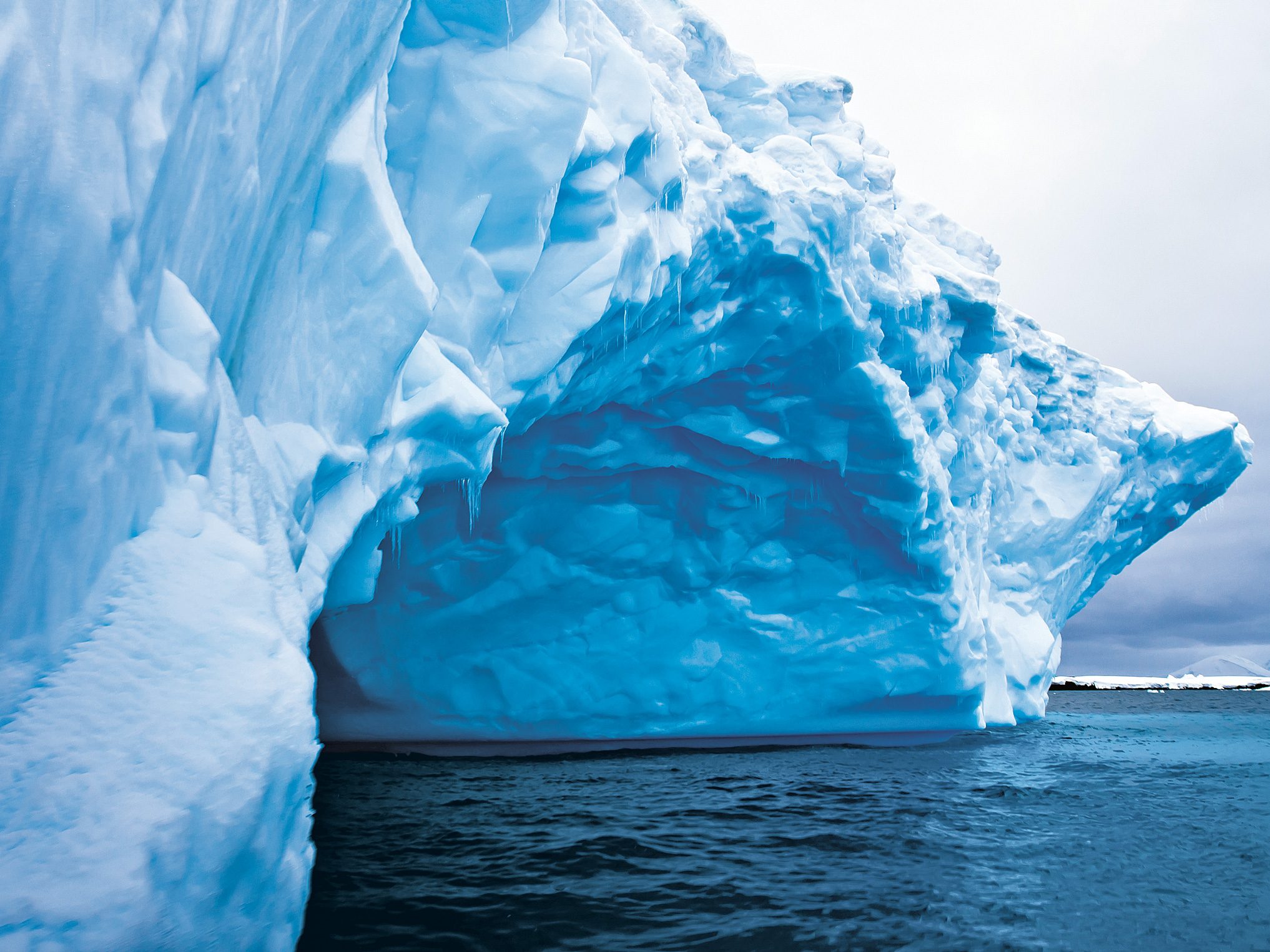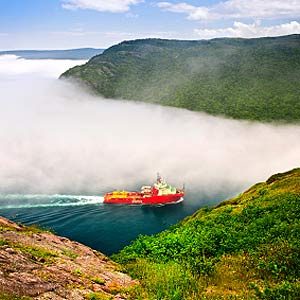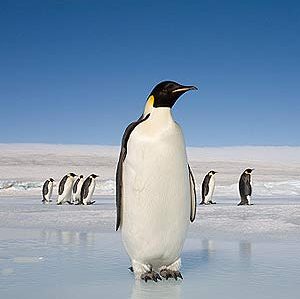
I began believing in ghosts early one morning-at what would have been dawn if Antarctica bothered with dawns-on the bridge of the National Geographic Explorer.
I was mentored there in the ways of unseen things by the ship’s first mate, Piers Alvarez-Munoz, his name rivalled in its magnificence only by his beard. His radar screen was a mostly useless wash of scattered green specks-ice floes and monstrous birds with three-metre wingspans and maybe a giant kraken-and through the windows we couldn’t see much beyond the bow of the ship. A snow squall had blown across the Drake Passage and was now upon our decks, another one of the vest-pocket storms that kept rising out of nowhere and returning there just as quickly. Alvarez-Munoz checked his paper charts and compasses, and plotted our course with a thick pencil line, finding his way by hand because these waters defy even the most advanced of our machines. Then he nodded: Antarctica was in our immediate range. He was doubtless, even though the only instrument able to find any sign of it was his heart.
After such a long journey, and in the absence of more tangible evidence, it was hard to accept his assurances that we were almost there. My 140 fellow passengers had funnelled to this featureless patch of ocean from across the better-known world, every last one of us having originated somewhere due north: flights first to Buenos Aires, and then a Lindblad Expeditions charter to Ushuaia, a small, colourful town at the bottom of Argentina that lays claim to the southernmost civilized everything. Then we had boarded the Explorer and nosed through the shimmering Beagle Channel, to our left the mountains of Argentina, to our right the slightly more dramatic mountains of Chile. We underwent a lifeboat drill, quietly deciding who among us looked the most delicious, before we escaped the last grip of land and slipped into the Drake Passage sometime around midnight. The seas grew rougher where the Atlantic and Pacific met, joined in their union the next day by several of our half-digested breakfasts and lunches. Nearly 40 hours after we had pushed away from safe harbour and four days since most of us had left home, there stood Alvarez-Munoz with his pencil, insisting that, any moment now, Antarctica would appear before us.
When it did not, he unrolled another one of his charts to justify his belief in paranormal land masses. The ocean, now the Southern one-its fluid boundaries another of our perhaps mythic inventions, a function solely of a steep drop in water temperature-was as much as 5,500 metres deep here. But nearby, underwater peaks rose within 200 metres of the surface. Beneath us were entire ranges that dwarfed the Andes. No one had ever climbed or even seen these kilometre-high monuments, but that didn’t mean they were not there. It might seem impossible that there are destinations on this planet we haven’t visited, even remotely, but in many ways Antarctica is an article of faith more than a hard physical fact; its ranking among the continents will last only so long as we believe it does.

“All the best mountains are hidden,” Alvarez-Munoz said-and he said it with finality-before he turned his binoculars back to the uniform grey in front of us.
Not long after, the wall of mist and snow opened up, and on the horizon to our right was our first glimpse of a semi-solid object, if not land: a single, lonely iceberg, shaped like a triangle. It was what a child would draw if you asked her to draw an iceberg, some implausible idea of an iceberg, calved into miraculous existence. Then came another, larger and to the left. Then another, the way seagulls foretell arrival at more conventional shores. And then, at last, there was a small knob of grey rock in the distance, the first of the South Shetland Islands, the ambassadors of genuine Antarctica, the Antarctica that isn’t defined by hunches or Fahrenheit, the Antarctica that can be seen and touched and visited, the Antarctica that is everything we’ve come to associate with what it means to be a place. It felt, at that delirious moment on the bridge, as though we had finally arrived. Alvarez-Munoz looked down and ran his fingers across his chart and extended his pencil line, and by the time he looked back up, the rock and everything it represented had disappeared.
Months later, my memories of that trip aren’t like my memories of other trips. They aren’t even like my other memories. There are no colours, no tall buildings, no roads or signs or music, no snapshots of indigenous faces, none of the usual time-stamps given to us by day and night. There was always light, the sun setting spectacularly before changing
its mind at the last moment and rising again, true darkness just one more of Antarctica’s vast repertoire of apparitions. When I close my eyes, there are only shadows and blurs, a hundred shades of blue and white, snow and ice, sleeplessness and awe. I don’t really remember specific locations, and I can’t say I fully remember moments, even. I remember the gooseflesh and lumps in my throat.
One afternoon during our voyage, the itinerary was vague: “Expedition Day in the Weddell Sea!” the daily briefing read. “Please listen for announcements regarding our plans, which will depend on weather and ice conditions.” The Weddell Sea is among the more daunting bodies of water on Earth, a whirlpool trapped between the Antarctic Peninsula and Cape Norvegia in Queen Maud Land. Thanks to the peninsula’s grand design, the Weddell Sea gathers ice in all its transient forms: enormous tabular bergs, like elevated football fields; floes, white and sheet-like; bergy bits, icebergs now on their way to becoming ocean; and growlers, blue boulders somehow floating like corks. One survey of the area found 30,000 icebergs in just 3,900 square kilometres of ocean. It’s hard to explain what that looks like from the bow of a ship, but it looks like a different planet, one where ice is not only a living thing but also the top of the food chain. It snaps and howls and groans; it lifts and rolls and crashes. In the middle of all that, back up on the bridge, a brave decision was made: we would push south through that ghoulish course as far as we could, because at the end of it there just might be emperor penguins.

Virtually all of us stood on the bridge or the bow, looking out across the water and ice, as though the force of our collective will could make everything fall into place. Soon, six orcas popped up beside us, their dorsal fins cutting through the chop, and then one dived under the ship, from starboard to port, turning upside down to show off the white of its undercarriage through a few centimetres of sea. Today, when I remember that killer whale, I remember my own stomach flip, the vertigo that came from looking down at the belly of a beast.
Then fog and snow rolled in. On we went, driven by our now steadfast faith in banshee rocks and pencils. Icebergs loomed out from behind the drapes that had been pulled around us; the Explorer passed over a bergy bit that shuddered down the hull of the ship. Everything was silver and spooky until the storm blew out and we found open water again; now we were really steaming toward Snow Hill Island and the fast ice that surrounded it. A clean edge appeared in the distance-an unbroken sheet of ice as wide as a plain, white against the black of the sea in front of it-and through binoculars we could see some small dots on it. A murmur went up. The crew let the currents catch the ship and draw us toward the leading edge of the ice. Our hull dug into it just hard enough to anchor us, and there they were: eight emperor penguins that had just leapt out of the water, taking the opening steps of their kilometres-long march back home, somewhere beyond our scope. Ten minutes earlier or 10 minutes later, and we would have missed them. Instead, they were right there, waiting. Then Antarctica did what it does, and they were gone.
We turned around and retreated north, lest we disappear with the penguins, lost in the ice. Celebrating in the ship’s lounge with high-fives and raised glasses, we felt as though we had really arrived now, as though we had finally completed each of our private unspoken quests. The Explorer’s passengers were mostly older, some of life’s veteran navigators crossing off their seventh continent, and many of them possessed that particular brand of gratitude that comes only with time and travel. I don’t think I was the only one who had trouble holding it together. We had come all this way and cashed in so much good fortune for the outside chance that we might see those eight emperor penguins pick their way across the ice. And we did. In a world that can seem purpose-built and calculated for us, engineered for our safety and convenience, every part of that long-shot day, the entire lunatic trip, felt as fleeting as luck itself. That feeling is what I remember, and that’s why Antarctica remains impervious to memories and maps and the mental thumbtacks we might stick in them.
All of its settlements are temporary. Its borders migrate. Its landmarks are seasonal. Its ports are killer whales, and its capital cities are penguins.
© 2014 By Chris Jones. Afar (August/September 2014). afar.com